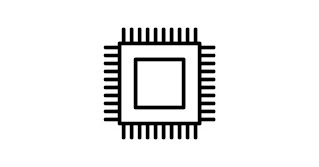1. While executing the main program, if two or more interrupts occur, then the sequence of appearance of interrupts is called
a. multi-interrupt
b. nested interrupt
c. interrupt within interrupt
d. nested interrupt and interrupt within interrupt
Ans- d. nested interrupt and interrupt within interrupt
2. An interrupt breaks the execution of instructions and diverts its execution to
a. Interrupt service routine
b. Counter word register
c. Execution unit
d. control unit
Ans- a. Interrupt service routine
3. While CPU is executing a program, an interrupt exists then it
a. follows the next instruction in the program
b. jumps to instruction in other registers
c. breaks the normal sequence of execution of instructions
d. stops executing the program
Ans- c. breaks the normal sequence of execution of instructions
4. When the CPU executes IRET,
a. contents of IP and CS are retrieved
b. the control transfers from ISR to main program
c. clears the trap flag
d. clears the interrupt flag
Ans- a. contents of IP and CS are retrieved
5. At the end of ISR, the instruction should be
a. END
b. ENDS
c. IRET
d. INTR
Ans- c. IRET
6. After every response to the single step interrupt the flag that is cleared is
a. IF (Interrupt Flag)
b. TF (Trap Flag)
c. OF (Overflow Flag)
d. None of the mentioned
Ans- b. TF (Trap Flag)
7. During the execution of an interrupt, the data pushed into the stack is the content of
a. IP
b. CS
c. PSW
d. All of the mentioned
Ans- d. All of the mentioned
8. The type of the interrupt may be passed to the interrupt structure of CPU from
a. interrupt service routine
b. stack
c. interrupt controller
d. none of the mentioned
Ans- c. interrupt controller
9. The interrupt request that is independent of IF flag is
a. NMI
b. TRAP
c. Divide by zero
d. All of the mentioned
Ans- d. All of the mentioned
10. Example of an internal interrupt is
a. divide by zero interrupt
b. overflow interrupt
c. interrupt due to INT
d. all of the mentioned
Ans- d. All of the mentioned

